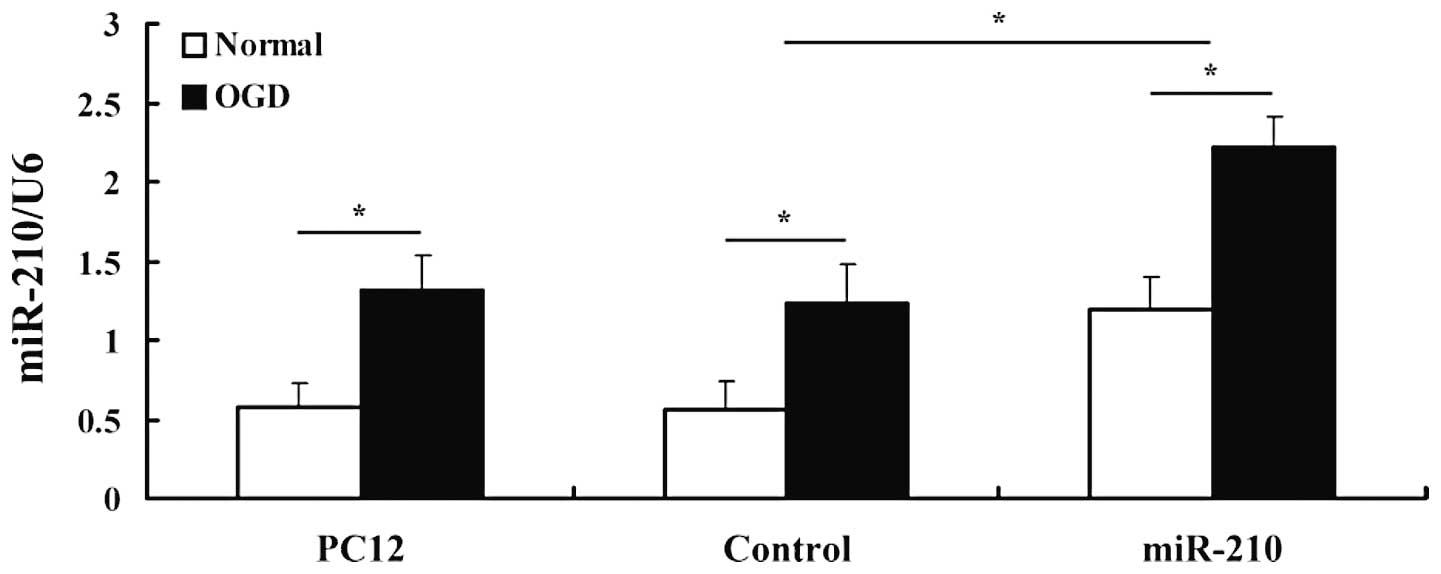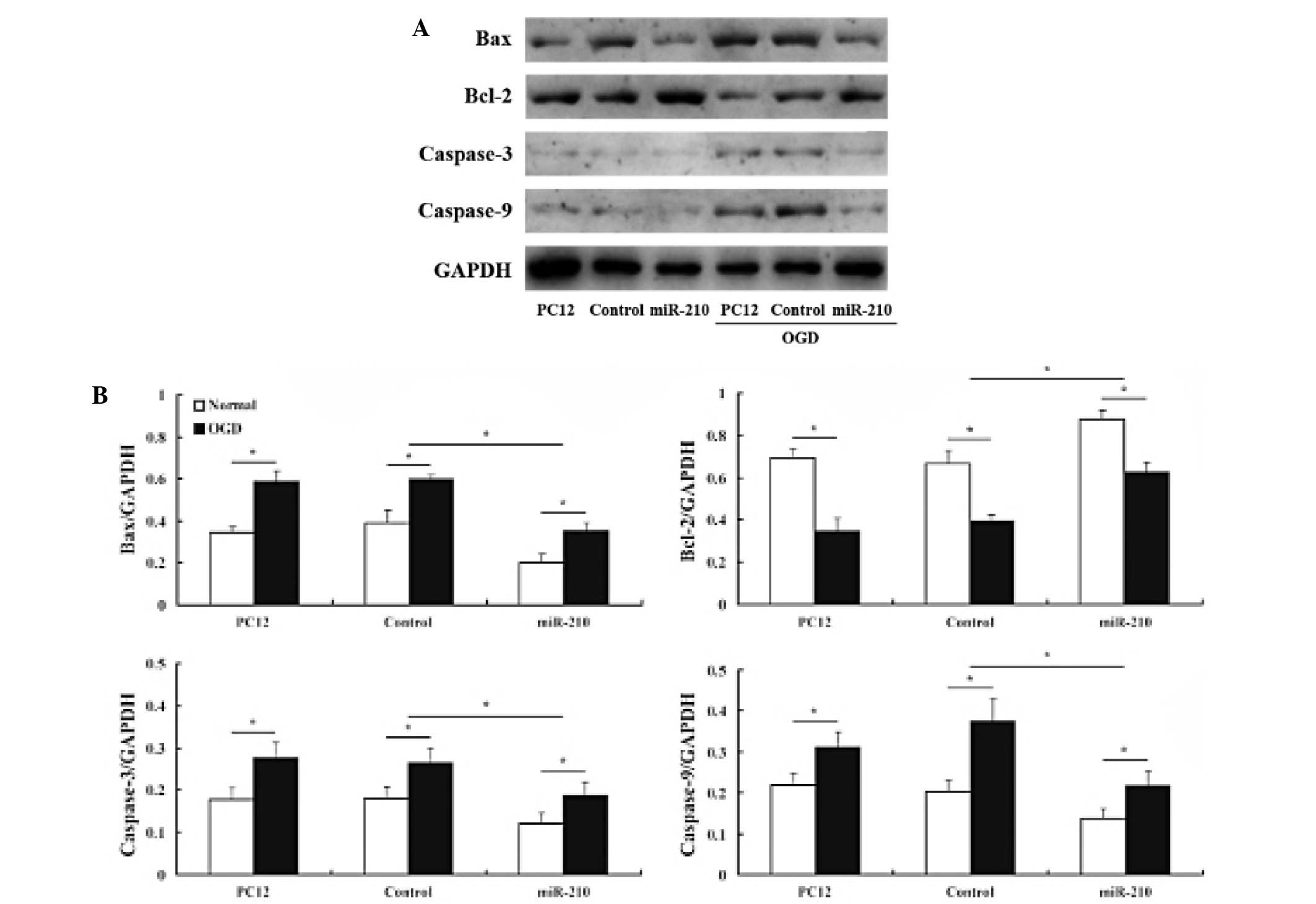|
1
|
du Plessis AJ and Volpe JJ: Perinatal
brain injury in the preterm and term newborn. Curr Opin Neurol.
15:151–157. 2002.PubMed/NCBI
|
|
2
|
Gonzalez FF and Ferriero DM: Therapeutics
for neonatal brain injury. Pharmacol Ther. 120:43–53. 2008.
View Article : Google Scholar : PubMed/NCBI
|
|
3
|
Shankaran S and Laptook AR: Hypothermia as
a treatment for birth asphyxia. Clin Obstet Gynecol. 50:624–635.
2007. View Article : Google Scholar : PubMed/NCBI
|
|
4
|
Whitelaw A and Thoresen M: Clinical trials
of treatments after perinatal asphyxia. Curr Opin Pediatr.
14:664–668. 2002. View Article : Google Scholar : PubMed/NCBI
|
|
5
|
Lawn JE, Cousens S and Zupan J; Lancet
Neonatal Survival Steering Team. 4 million neonatal deaths: when?
Where? Why? Lancet. 365:891–900. 2005. View Article : Google Scholar : PubMed/NCBI
|
|
6
|
Fotopoulos S, Pavlou K, Skouteli H,
Papassotiriou I, Lipsou N and Xanthou M: Early markers of brain
damage in premature low-birth-weight neonates who suffered from
perinatal asphyxia and/or infection. Biol Neonate. 79:213–218.
2001. View Article : Google Scholar : PubMed/NCBI
|
|
7
|
Allin M, Matsumoto H, Santhouse AM, et al:
Cognitive and motor function and the size of the cerebellum in
adolescents born very pre-term. Brain. 124:60–66. 2001. View Article : Google Scholar : PubMed/NCBI
|
|
8
|
Isaacs EB, Edmonds CJ, Chong WK, Lucas A,
Morley R and Gadian DG: Brain morphometry and IQ measurements in
preterm children. Brain. 127:2595–2607. 2004. View Article : Google Scholar : PubMed/NCBI
|
|
9
|
Casiro OG, Moddemann DM, Stanwick RS,
Panikkar-Thiessen VK, Cowan H and Cheang MS: Language development
of very low birth weight infants and fullterm controls at 12 months
of age. Early Hum Dev. 24:65–77. 1990. View Article : Google Scholar : PubMed/NCBI
|
|
10
|
Marlow N, Rose AS, Rands CE and Draper ES:
Neuropsychological and educational problems at school age
associated with neonatal encephalopathy. Arch Dis Child Fetal
Neonatal Ed. 90:F380–F387. 2005. View Article : Google Scholar : PubMed/NCBI
|
|
11
|
Steinman KJ, Gorno-Tempini ML, Glidden DV,
et al: Neonatal watershed brain injury on magnetic resonance
imaging correlates with verbal IQ at 4 years. Pediatrics.
123:1025–1030. 2009.PubMed/NCBI
|
|
12
|
Tioseco JA, Aly H, Essers J, Patel K and
El-Mohandes AA: Male sex and intraventricular hemorrhage. Pediatr
Crit Care Med. 7:40–44. 2006. View Article : Google Scholar : PubMed/NCBI
|
|
13
|
Bacon AL and Harris AL: Hypoxia-inducible
factors and hypoxic cell death in tumour physiology. Ann Med.
36:530–539. 2004. View Article : Google Scholar : PubMed/NCBI
|
|
14
|
Gordan JD and Simon MC: Hypoxia-inducible
factors: central regulators of the tumor phenotype. Curr Opin Genet
Dev. 17:71–77. 2007. View Article : Google Scholar : PubMed/NCBI
|
|
15
|
Gruber M and Simon MC: Hypoxia-inducible
factors, hypoxia, and tumor angiogenesis. Curr Opin Hematol.
13:169–174. 2006. View Article : Google Scholar : PubMed/NCBI
|
|
16
|
Harris AL: Hypoxia - a key regulatory
factor in tumour growth. Nat Rev Cancer. 2:38–47. 2002. View Article : Google Scholar : PubMed/NCBI
|
|
17
|
Kim JW, Tchernyshyov I, Semenza GL and
Dang CV: HIF-1-mediated expression of pyruvate dehydrogenase
kinase: a metabolic switch required for cellular adaptation to
hypoxia. Cell Metab. 3:177–185. 2006. View Article : Google Scholar : PubMed/NCBI
|
|
18
|
Koumenis C: ER stress, hypoxia tolerance
and tumor progression. Curr Mol Med. 6:55–69. 2006. View Article : Google Scholar : PubMed/NCBI
|
|
19
|
Pocock R: Invited review: decoding the
microRNA response to hypoxia. Pflugers Arch. 461:307–315. 2011.
View Article : Google Scholar : PubMed/NCBI
|
|
20
|
Ivan M, Harris AL, Martelli F and
Kulshreshtha R: Hypoxia response and microRNAs: no longer two
separate worlds. J Cell Mol Med. 12:1426–1431. 2008. View Article : Google Scholar : PubMed/NCBI
|
|
21
|
Chan SY and Loscalzo J: MicroRNA-210: a
unique and pleiotropic hypoxamir. Cell Cycle. 9:1072–1083. 2010.
View Article : Google Scholar : PubMed/NCBI
|
|
22
|
Chan SY, Zhang YY, Hemann C, Mahoney CE,
Zweier JL and Loscalzo J: MicroRNA-210 controls mitochondrial
metabolism during hypoxia by repressing the iron-sulfur cluster
assembly proteins ISCU1/2. Cell Metab. 10:273–284. 2009. View Article : Google Scholar : PubMed/NCBI
|
|
23
|
Chen Z, Li Y, Zhang H, Huang P and Luthra
R: Hypoxia-regulated microRNA-210 modulates mitochondrial function
and decreases ISCU and COX10 expression. Oncogene. 29:4362–4368.
2010. View Article : Google Scholar : PubMed/NCBI
|
|
24
|
Favaro E, Ramachandran A, McCormick R, et
al: MicroRNA-210 regulates mitochondrial free radical response to
hypoxia and krebs cycle in cancer cells by targeting iron sulfur
cluster protein ISCU. PLoS One. 5:e103452010. View Article : Google Scholar : PubMed/NCBI
|
|
25
|
Huang X, Ding L, Bennewith KL, et al:
Hypoxia-inducible mir-210 regulates normoxic gene expression
involved in tumor initiation. Mol Cell. 35:856–867. 2009.
View Article : Google Scholar : PubMed/NCBI
|
|
26
|
Kushibiki T: Photodynamic therapy induces
microRNA-210 and -296 expression in HeLa cells. J Biophotonics.
3:368–372. 2010. View Article : Google Scholar : PubMed/NCBI
|
|
27
|
Pulkkinen K, Malm T, Turunen M, Koistinaho
J and Ylä-Herttuala S: Hypoxia induces microRNA miR-210 in vitro
and in vivo ephrin-A3 and neuronal pentraxin 1 are potentially
regulated by miR-210. FEBS Lett. 582:2397–2401. 2008. View Article : Google Scholar : PubMed/NCBI
|
|
28
|
Camps C, Buffa FM, Colella S, et al:
hsa-miR-210 Is induced by hypoxia and is an independent prognostic
factor in breast cancer. Clin Cancer Res. 14:1340–1348. 2008.
View Article : Google Scholar : PubMed/NCBI
|
|
29
|
Jeyaseelan K, Lim KY and Armugam A:
MicroRNA expression in the blood and brain of rats subjected to
transient focal ischemia by middle cerebral artery occlusion.
Stroke. 39:959–966. 2008. View Article : Google Scholar : PubMed/NCBI
|
|
30
|
Liu DZ, Tian Y, Ander BP, et al: Brain and
blood microRNA expression profiling of ischemic stroke,
intracerebral hemorrhage, and kainate seizures. J Cereb Blood Flow
Metab. 30:92–101. 2010. View Article : Google Scholar : PubMed/NCBI
|
|
31
|
Fasanaro P, D’Alessandra Y, Di Stefano V,
et al: MicroRNA-210 modulates endothelial cell response to hypoxia
and inhibits the receptor tyrosine kinase ligand Ephrin-A3. J Biol
Chem. 283:15878–15883. 2008. View Article : Google Scholar : PubMed/NCBI
|
|
32
|
Tabakman R, Lazarovici P and Kohen R:
Neuroprotective effects of carnosine and homocarnosine on
pheochromocytoma PC12 cells exposed to ischemia. J Neurosci Res.
68:463–469. 2002. View Article : Google Scholar : PubMed/NCBI
|
|
33
|
Guo G and Bhat NR: p38alpha MAP kinase
mediates hypoxia-induced motor neuron cell death: a potential
target of minocycline’s neuroprotective action. Neurochem Res.
32:2160–2166. 2007.PubMed/NCBI
|
|
34
|
Tabakman R, Jiang H, Schaefer E, Levine RA
and Lazarovici P: Nerve growth factor pretreatment attenuates
oxygen and glucose deprivation-induced c-Jun amino-terminal kinase
1 and stress-activated kinases p38alpha and p38beta activation and
confers neuroprotection in the pheochromocytoma PC12 Model. J Mol
Neurosci. 22:237–250. 2004. View Article : Google Scholar
|
|
35
|
Griffiths-Jones S, Grocock RJ, van Dongen
S, Bateman A and Enright AJ: miRBase: microRNA sequences, targets
and gene nomenclature. Nucleic Acids Res. 34:D140–D144. 2006.
View Article : Google Scholar : PubMed/NCBI
|
|
36
|
Lee YS and Dutta A: MicroRNAs in cancer.
Annu Rev Pathol. 4:199–227. 2009. View Article : Google Scholar
|
|
37
|
Kim J, Krichevsky A, Grad Y, et al:
Identification of many microRNAs that copurify with polyribosomes
in mammalian neurons. Proc Natl Acad Sci USA. 101:360–365. 2004.
View Article : Google Scholar : PubMed/NCBI
|
|
38
|
Kosik KS and Krichevsky AM: The Elegance
of the MicroRNAs: A Neuronal Perspective. Neuron. 47:779–782. 2005.
View Article : Google Scholar : PubMed/NCBI
|
|
39
|
Schratt GM, Tuebing F, Nigh EA, et al: A
brain-specific microRNA regulates dendritic spine development.
Nature. 439:283–289. 2006. View Article : Google Scholar : PubMed/NCBI
|
|
40
|
Kulshreshtha R, Ferracin M, Wojcik SE, et
al: A microRNA signature of hypoxia. Mol Cell Biol. 27:1859–1867.
2007. View Article : Google Scholar
|
|
41
|
Giannakakis A, Sandaltzopoulos R, Greshock
J, et al: miR-210 links hypoxia with cell cycle regulation and is
deleted in human epithelial ovarian cancer. Cancer Biol Ther.
7:255–264. 2008. View Article : Google Scholar : PubMed/NCBI
|
|
42
|
Crosby ME, Kulshreshtha R, Ivan M and
Glazer PM: MicroRNA regulation of DNA repair gene expression in
hypoxic stress. Cancer Res. 69:1221–1229. 2009. View Article : Google Scholar : PubMed/NCBI
|
|
43
|
Hu S, Huang M, Li Z, et al: MicroRNA-210
as a novel therapy for treatment of ischemic heart disease.
Circulation. 122:S124–S131. 2010. View Article : Google Scholar : PubMed/NCBI
|
|
44
|
Bittigau P, Sifringer M, Genz K, et al:
Antiepileptic drugs and apoptotic neurodegeneration in the
developing brain. Proc Natl Acad Sci USA. 99:15089–15094. 2002.
View Article : Google Scholar : PubMed/NCBI
|
|
45
|
Ikonomidou C, Bosch F, Miksa M, et al:
Blockade of NMDA receptors and apoptotic neurodegeneration in the
developing brain. Science. 283:70–74. 1999. View Article : Google Scholar : PubMed/NCBI
|
|
46
|
Jevtovic-Todorovic V, Hartman RE, Izumi Y,
et al: Early exposure to common anesthetic agents causes widespread
neurodegeneration in the developing rat brain and persistent
learning deficits. J Neurosci. 23:876–882. 2003.
|
|
47
|
Sanders RD, Ma D, Brooks P and Maze M:
Balancing paediatric anaesthesia: preclinical insights into
analgesia, hypnosis, neuroprotection, and neurotoxicity. Br J
Anaesth. 101:597–609. 2008. View Article : Google Scholar
|
|
48
|
Pardridge WM: Intravenous, non-viral RNAi
gene therapy of brain cancer. Expert Opin Biol Ther. 4:1103–1113.
2004. View Article : Google Scholar : PubMed/NCBI
|
|
49
|
Pardridge WM: shRNA and siRNA delivery to
the brain. Adv Drug Deliv Rev. 59:141–152. 2007. View Article : Google Scholar : PubMed/NCBI
|
|
50
|
Kuida K, Haydar TF, Kuan CY, et al:
Reduced apoptosis and cytochrome c-mediated caspase activation in
mice lacking caspase 9. Cell. 94:325–337. 1998. View Article : Google Scholar : PubMed/NCBI
|
|
51
|
Kuida K, Zheng TS, Na S, et al: Decreased
apoptosis in the brain and premature lethality in CPP32-deficient
mice. Nature. 384:368–372. 1996. View Article : Google Scholar : PubMed/NCBI
|












